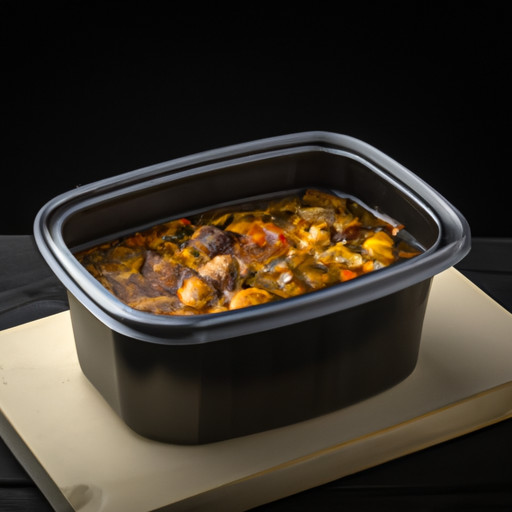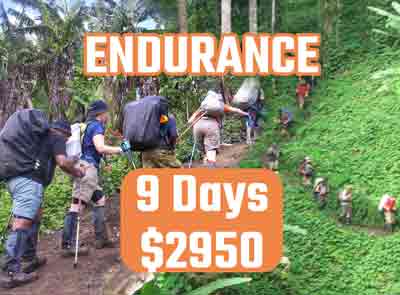Backpacking Food Ideas – Hiking Meal Plans and Snacks for Trekkers on the Kokoda Track
Introduction
Trekking Kokoda is a challenging and rewarding adventure that takes you through the rugged landscapes of Papua New Guinea. As you embark on this incredible journey along the historic Kokoda Track, ensuring you have the right hiking snacks is crucial for sustaining your energy and keeping you fuelled throughout the trek. In this guide, we’ll explore a variety of food options, from healthy fruit roll-ups to dehydrated meals, to help you plan your hiking meals effectively.
The Importance of a Well-Planned Hiking Meal Plan
A well-thought-out hiking meal plan is essential for a successful Kokoda Track experience. When preparing your meals, consider factors such as weight, nutritional value, and ease of preparation. Here, we’ll delve into various food ideas and meal choices that cater to different preferences and dietary needs.
Lightweight and Easy-to-Pack Snack Ideas
Healthy Fruit Roll-Ups
Healthy fruit roll-ups are a delightful and lightweight snack that can provide a quick energy boost. Packed with natural sugars, vitamins, and minerals, they are a great alternative to traditional sweets. Ensure you pack these in an airtight container to prevent them from sticking together.
Freeze-Dried Food
Freeze-dried meals are a staple for trekkers on the Kokoda Track. They are lightweight, easy to pack, and require minimal cooking time. Choose from a variety of freeze-dried options, including fruits, vegetables, and complete meals. Simply add boiling water, and you’ll have a hot and nourishing dish ready to eat.
Beef Jerky and Meat Jerky’s
For a protein-packed snack, beef jerky and other meat jerky variants are excellent choices. These snacks are lightweight, don’t require refrigeration, and offer a savory and satisfying flavour. Ensure you pack enough to keep your energy levels up during the demanding trekking days.
Dehydrated Hiking Meals for Sustained Energy
Dehydrated Hiking Meals
Dehydrated hiking meals are convenient and easy to prepare on the trail. With a variety of options available, including vegan choices, you can tailor your meals to suit your preferences. These meals retain their nutritional value while shedding excess weight, making them an ideal choice for multi-day hikes.
Local Food on the Kokoda Track
Exploring local cuisine adds a cultural touch to your hiking experience. While planning your meals, consider incorporating locally sourced food items. This not only supports the communities along the trail but also introduces you to unique flavours and ingredients.
Dried Fruit and Trail Mix
Dried fruit and trail mix are essential components of a hiker’s diet. Packed with carbohydrates and natural sugars, they provide a quick energy boost. Create your trail mix with a combination of nuts, seeds, and dried fruits to keep your taste buds satisfied on the trail.
Quick and Easy Backpacking Food Options
Tuna and Peanut Butter
Tuna and peanut butter are excellent sources of protein and healthy fats. They come in convenient packaging and can be easily added to crackers or tortillas for a quick and filling meal. Ensure you pack these in sturdy containers to avoid leaks in your backpack.
Freeze-Dried Meals with Easy Preparation
Opting for freeze-dried meals with simple preparation steps is a smart choice for long days of hiking. These meals often come in individual packages, making it easy to portion your food for each day. Just add hot water, wait a few minutes, and your meal is ready to eat.
Essential Tips for Effective Backpacking Meal Planning
Plan Food for Backpacking with Precision
When planning your backpacking meals, calculate the right amount of food needed for each day. Consider factors such as the intensity of the trek, weather conditions, and your personal energy requirements. It’s better to have a bit more than not enough.
Store Your Food Properly
Proper food storage is crucial to prevent spoilage and maintain freshness. Use airtight containers for snacks like fruit roll-ups and trail mix, and ensure that freeze-dried and dehydrated meals are sealed tightly. This not only preserves the food but also prevents unwanted odours in your backpack.
Backpacking Cooking: Lightweight and Efficient
Invest in lightweight backpacking stoves for efficient cooking on the trail. These compact stoves allow you to boil water quickly, making meal preparation a breeze. Choose a stove that suits your needs and the type of food you plan to cook.
Dehydrating Your Own Food
For those who enjoy a hands-on approach, consider dehydrating your own food before the trek. This allows you to customize your meals, control the ingredients, and experiment with flavours. Just make sure to plan accordingly and dehydrate your meals well in advance.
Conclusion
As you prepare for your trek along the Kokoda Track, remember that a well-planned hiking meal plan is essential for a successful and enjoyable experience. From healthy fruit roll-ups to dehydrated hiking meals, the right food choices will keep you energized and ready for each day’s challenges. Embrace the diverse options available, mix and match to suit your preferences, and make the most of this incredible adventure through Papua New Guinea’s historic landscapes. Happy trekking!
FAQ’s
Q: What are some backpacking food ideas for a multi-day hike?
A: Some backpacking food ideas for a multi-day hike include freeze-dried meals, dehydrated vegetables, meal bars, and easy-to-carry snacks like nuts and dried fruits.
Q: What kind of food should I pack for a backpacking trip?
A: When packing food for a backpacking trip, it’s important to include lightweight and high-energy foods such as dehydrated meals, nuts, seeds, and energy bars to sustain you during the trek.
Q: How can I ensure I have enough food for my backpacking trip?
A: To ensure you have enough food for your backpacking trip, calculate the number of meals and snacks you’ll need each day, and consider factors like caloric needs and the intensity of the trek. Pack enough food to meet these requirements and consider adding extra food as a backup.
Q: What are some good backpacking meal tips for dinner on the trail?
A: Good backpacking meal tips for dinner on the trail include preparing freeze-dried or dehydrated meals that can be easily rehydrated with hot water, as well as carrying lightweight cooking equipment and seasonings to enhance the flavour of your meals.
Q: What are some backpacking breakfasts that are easy to prepare?
A: Some easy-to-prepare backpacking breakfasts include instant oatmeal, granola with powdered milk, breakfast bars, and dried fruit. These options provide quick energy and are lightweight to carry.
Q: How can I best plan my backpacking food strategy for a long hiking trip?
A: To plan the best backpacking food strategy for a long hiking trip, consider the duration, exertion level, and dietary preferences. Opt for lightweight, high-calorie, and nutrient-dense foods to keep you fueled throughout the journey.
Q: What are some meal choices for lunch on the trail during a backpacking trip?
A: Some meal choices for lunch on the trail during a backpacking trip include instant soups, sandwiches with durable bread, cheese, and cured meats, as well as quick-cooking grains like couscous or quinoa.
Q: Where can I find ultralight backpacking meal ideas for my next hiking trip?
A: You can find ultralight backpacking meal ideas for your next hiking trip in outdoor adventure stores, online camping forums, and backpacking recipe books that offer innovative and lightweight meal options for backpackers.
Q: What are some recommended backpacking snacks to keep me energized during a long trek?
A: Recommended backpacking snacks to keep you energized during a long trek include trail mix, energy bars, beef jerky, dried fruit, and nut butter packets. These high-protein and high-fat snacks provide sustained energy for the trail.
Q: How can I add water to my backpacking meals on the trail?
A: You can easily add water to your backpacking meals on the trail by carrying a lightweight and collapsible water container or using a portable water filter to safely refill your water supply at natural water sources along the trail.





